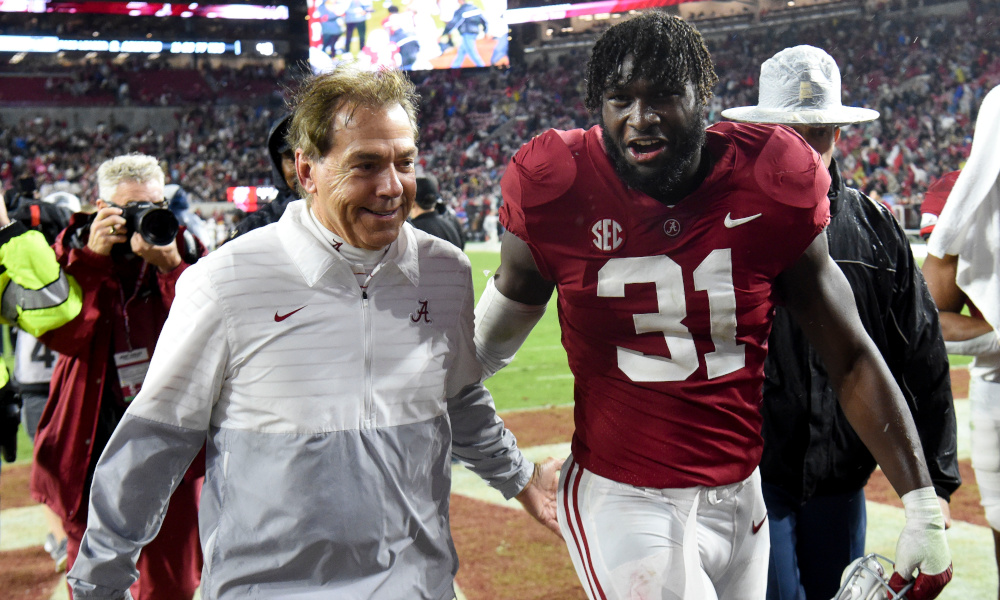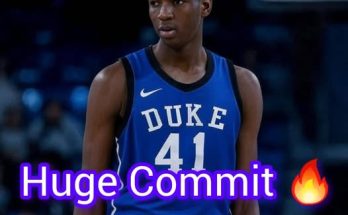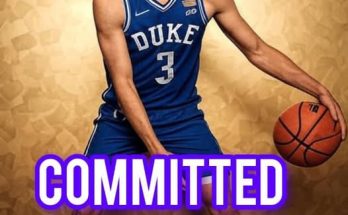In the world of college football, no name rings louder than Nick Saban. The now-retired head coach, who built a modern dynasty at Alabama, did more than just win championships—he created a production line of NFL-ready athletes, each groomed in Tuscaloosa and refined under his uncompromising standard of excellence. Today, as the dust settles on his unprecedented collegiate run, the staggering financial success of his former players in the NFL provides a whole new layer to Saban’s legacy. Over $2 billion in NFL contracts have been signed by players developed under his watch, a testament not only to their talent but to the development, discipline, and culture instilled by the legendary coach.
To truly grasp the magnitude of this achievement, one must understand what Nick Saban built at Alabama. When he took over the Crimson Tide program in 2007, Alabama was far from the powerhouse it is known as today. Within just a few seasons, he transformed the program into a national juggernaut. National titles, SEC dominance, and relentless recruiting success became hallmarks of his tenure. But beyond the wins and trophies, perhaps the most enduring measure of Saban’s influence is the impact he had on the professional futures of the young men who played for him.
The list of former Alabama players who have gone on to sign jaw-dropping NFL deals reads like a who’s who of football elite. Quarterbacks, running backs, wide receivers, offensive linemen, defensive juggernauts—Saban’s program produced them all. Stars like Julio Jones, Amari Cooper, Derrick Henry, Minkah Fitzpatrick, Tua Tagovailoa, and Jalen Hurts have not only flourished in the NFL but have also cashed in with massive contracts, proving the pipeline from Tuscaloosa to NFL riches is as strong as ever.
Take Jalen Hurts, for example. After beginning his career at Alabama, before transferring to Oklahoma for his final season, Hurts retained the discipline and drive forged during his formative years under Saban. He signed a five-year, $255 million contract with the Philadelphia Eagles, making him the highest-paid player in NFL history at the time of signing. Tua Tagovailoa, another Alabama quarterback and a household name, was drafted fifth overall by the Miami Dolphins in 2020 and has since become a franchise cornerstone. As of 2024, he signed a lucrative extension worth over $275 million, further bolstering the financial narrative of Saban’s NFL graduates.
Julio Jones, one of Saban’s first true NFL stars, helped set the tone for what was to come. Drafted sixth overall in 2011 by the Atlanta Falcons, Jones signed multiple major contracts during his career, including a three-year, $66 million extension in 2019. His career earnings exceeded $140 million, a figure that has paved the way for the likes of Amari Cooper and DeVonta Smith, two other elite receivers who emerged from Saban’s machine.
Cooper, the fourth overall pick in the 2015 NFL Draft, signed a five-year, $100 million contract with the Dallas Cowboys in 2020. DeVonta Smith, the 2020 Heisman Trophy winner, recently inked a $75 million extension with the Eagles, continuing the tradition of Saban-era receivers turning their Alabama success into NFL wealth.
Then there’s Derrick Henry, the bruising running back who won the Heisman Trophy in 2015. Drafted by the Tennessee Titans, Henry became one of the league’s premier backs and signed a four-year, $50 million extension in 2020. His dominance and longevity as a power runner highlight the durability and grit that have become synonymous with Saban’s coaching.
On the defensive side of the ball, Alabama has been just as prolific. Minkah Fitzpatrick, a star safety drafted by the Dolphins and now a centerpiece of the Pittsburgh Steelers’ defense, signed a four-year, $73.6 million deal in 2022, making him one of the highest-paid safeties in NFL history. Marlon Humphrey, the elite cornerback for the Baltimore Ravens, landed a five-year, $97.5 million extension in 2020, affirming Alabama’s reputation as a defensive powerhouse.
It’s not just the stars who contribute to the $2 billion figure—it’s the sheer volume of NFL talent produced. Since 2009, Alabama has had more players drafted than any other program in the country. From first-round picks to undrafted free agents who claw their way onto rosters, Saban’s influence stretches across every position and every level of the league. Offensive linemen like Jedrick Wills, Cam Robinson, and Evan Neal; linebackers like C.J. Mosley and Rashaan Evans; safeties like Landon Collins and Ha Ha Clinton-Dix—all have signed significant NFL deals, further stacking up the total earnings generated by Saban’s products.
In 2021 alone, Alabama set an NFL Draft record with six players selected in the first round. That same class included Mac Jones, Jaylen Waddle, Patrick Surtain II, DeVonta Smith, Najee Harris, and Alex Leatherwood. Each has since signed rookie deals worth millions, and several have already landed major extensions or are on the verge of doing so.
What’s most remarkable is the consistency. Year after year, Saban developed players who were not only NFL-ready physically but mentally prepared for the demands of the league. His emphasis on structure, accountability, and detail-oriented preparation made Alabama’s practices resemble those of professional teams. NFL coaches and general managers frequently praised Saban for delivering prospects who already understood how to handle pressure, playbook complexity, and media scrutiny.
Saban’s role extended beyond coaching—he was a mentor, disciplinarian, and CEO. He took immense pride in seeing his players succeed beyond Alabama, both on and off the field. For many, the NFL success was life-changing not just for the players themselves, but for their families and communities. Former Tide players have used their earnings to start foundations, give back to their hometowns, and launch business ventures. The ripple effect of Saban’s influence spans generations.
Even players who didn’t reach All-Pro heights still carved out meaningful NFL careers. Defensive linemen like Jonathan Allen, Daron Payne, and Quinnen Williams have signed multi-year deals worth over $70 million apiece. Eddie Jackson became a Pro Bowl safety and inked a four-year, $58.4 million extension. The list goes on and on.
With Saban’s retirement, the football world has been reflecting on his legacy—and the staggering economic impact he’s had on his players is a powerful part of that story. While national championships, coaching records, and the sheer dominance of his Alabama teams are historic in their own right, it’s the life-changing wealth created under his leadership that adds a human dimension to his greatness.
In an age where the pathway from college to pro football is under increased scrutiny, Nick Saban’s model at Alabama stands as proof of what’s possible when elite coaching, top-tier recruiting, and a professional mindset converge. More than 100 of his former players have reached the NFL, and many more are on their way. The $2 billion milestone isn’t just a number—it’s a symbol of opportunity realized, of talent nurtured and unleashed at the highest level.
As Kalen DeBoer now takes the reins of the Alabama program, the challenge will be not only to sustain success on the field but to maintain the pipeline of NFL-ready talent that Saban built with surgical precision. The standard has been set, the blueprint has been written, and the bank accounts of former Alabama stars are living proof of the power of the Saban era.
Nick Saban may no longer roam the sidelines in Tuscaloosa, but the legacy he leaves behind will echo through draft nights, NFL locker rooms, and contract negotiations for decades to come. His former players aren’t just football stars—they’re financial giants, molded by a coach who demanded greatness and delivered nothing less.



